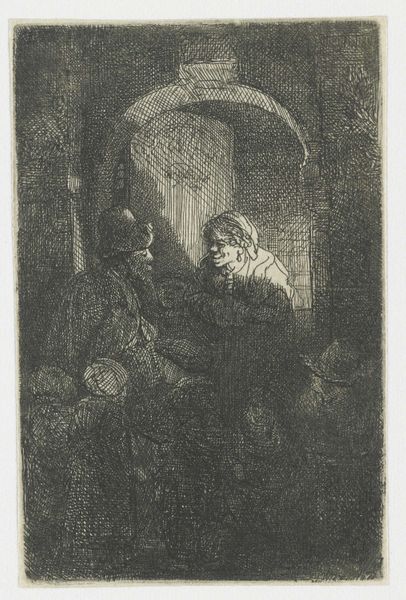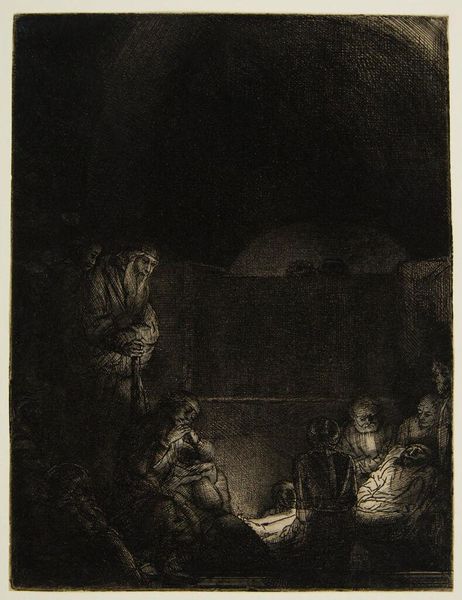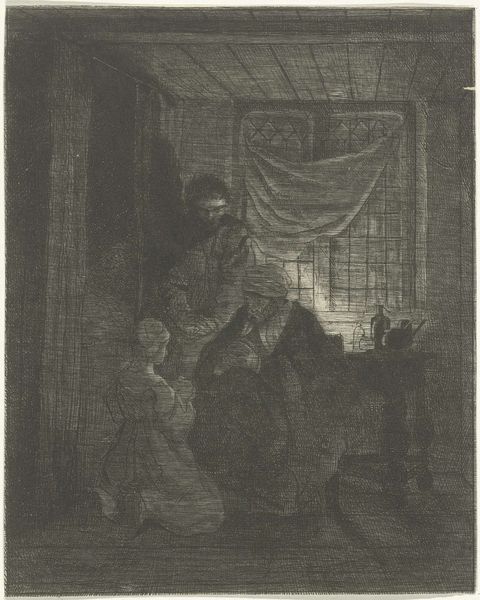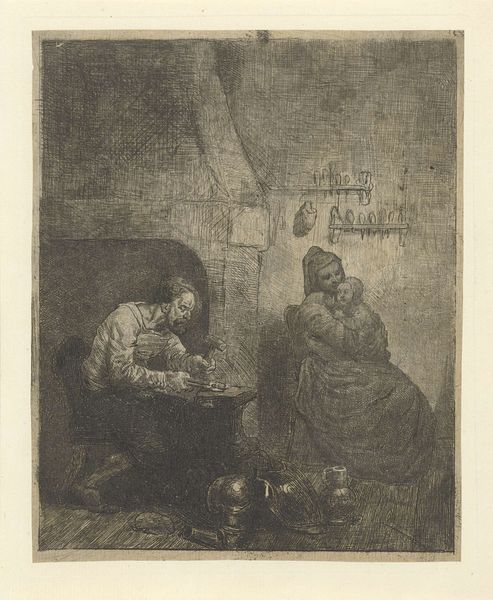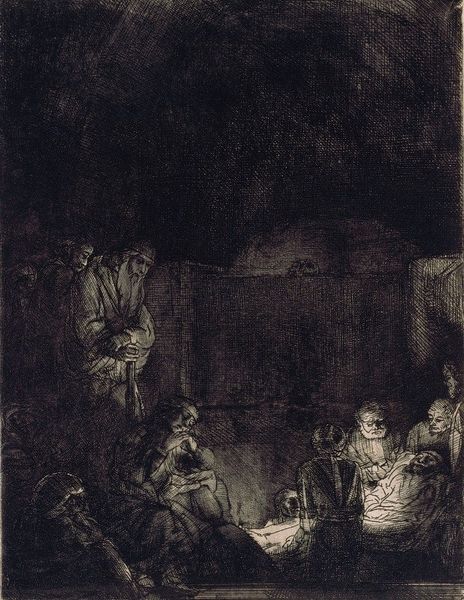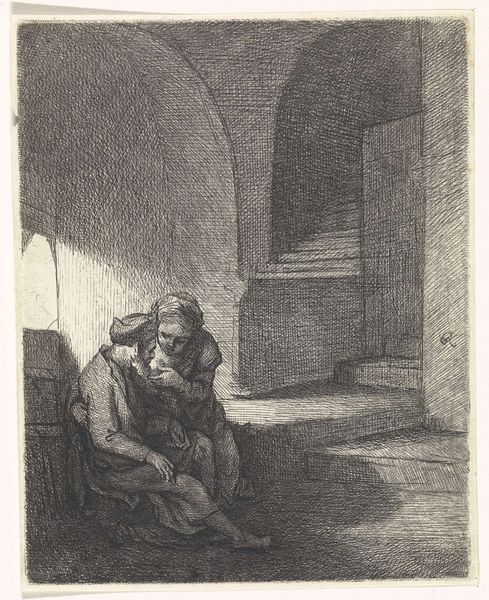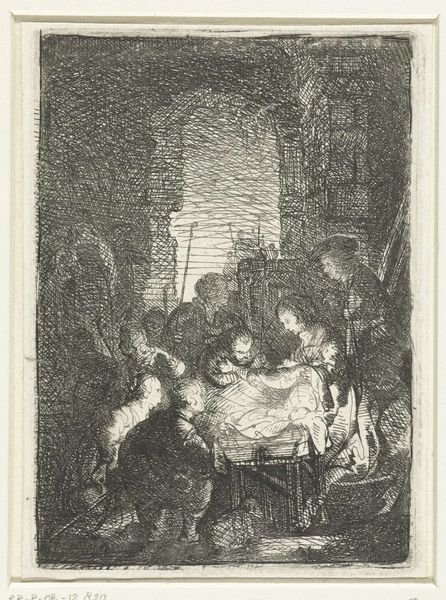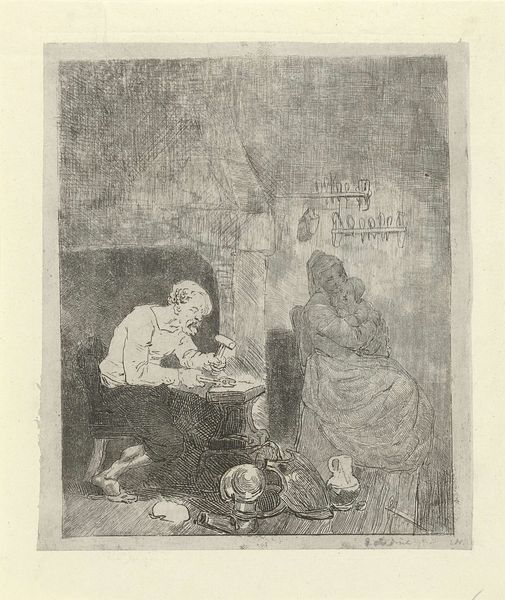
A Hurdy-Gurdy Player Followed by Children at the Door of a House ("The Schoolmaster") 1641
0:00
0:00
Dimensions: plate: 9.5 x 6.3 cm (3 3/4 x 2 1/2 in.)
Copyright: CC0 1.0
Editor: This etching by Rembrandt van Rijn, "A Hurdy-Gurdy Player Followed by Children at the Door of a House," presents such a stark scene of what looks like poverty. What social dynamics do you observe in this piece? Curator: This etching serves as social commentary, doesn't it? Think about the hurdy-gurdy player, a symbol of itinerant life, standing at the threshold. How does Rembrandt use the children clustered around him to reflect the vulnerabilities of marginalized communities in 17th-century Netherlands? Editor: It's striking how the light seems to isolate the figures, almost like a stage. Curator: Exactly! The chiaroscuro emphasizes the contrast between the performer's world and the relative safety inside the house. Does it challenge the viewer to consider their own position in relation to those on the margins? Editor: It definitely makes you think about the unseen struggles of people who were often ignored. I hadn't considered the social commentary angle so directly before. Curator: Art can be a powerful mirror reflecting society's inequalities. Hopefully, by engaging with works like this, we can foster a more empathetic understanding of history and its reverberations today.
Comments
No comments
Be the first to comment and join the conversation on the ultimate creative platform.
